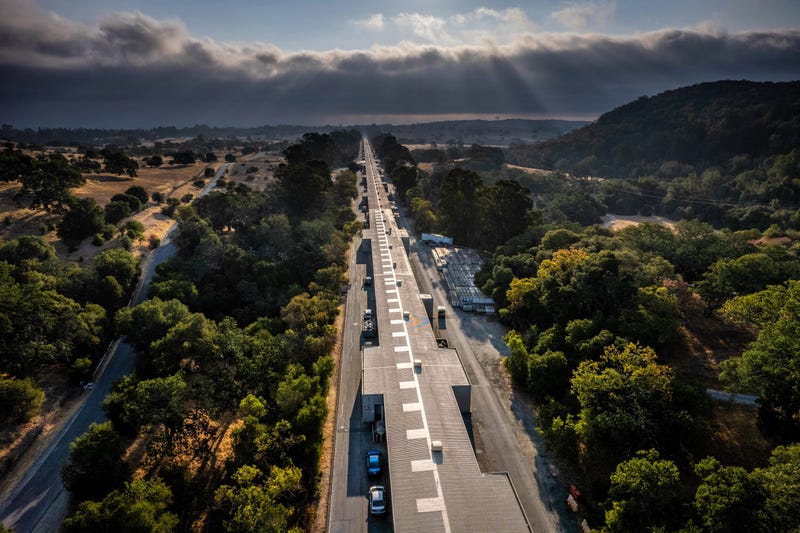Engineers who have toiled on the world’s most powerful X-ray laser for over a decade have finally achieved first light with the instrument, meaning that science with the newly energized machine is nearly upon us.
The laser is the Linac (short for linear accelerator) Coherent Light Source-II, or LCLS-II, and it will be used to produce high-energy X-rays that are used to look at the smallest, most subtle machinations of matter and its interactions. Gizmodo did a full breakdown of LCLS last year and you can check out photos from inside the accelerator structure here.
LCLS-II will generate one million X-ray pulses per second, a massive improvement on the original LCLS’s 120 pulses per second. The new X-rays will be 10,000 times brighter than those generated by its predecessor and will literally shed light on phenomena that are not observable with the original machine.
“Now that there’s a lot more photons, there’s a lot more X-rays to do science with,” Andrew Burrill, associate lab director for the Accelerator Directorate, told Gizmodo early 2021. “If you’re collecting data… it takes a long time at 120 shots a second. But at a million shots a second, it doesn’t take any time at all.”
“The light from SLAC’s LCLS-II will illuminate the smallest and fastest phenomena in the universe and lead to big discoveries in disciplines ranging from human health to quantum materials science,” said U.S. Secretary of Energy Jennifer M. Granholm, in a SLAC release. “This upgrade to the most powerful X-ray laser in existence keeps the United States at the forefront of X-ray science, providing a window into how our world works at the atomic level.”
The two-mile-long accelerator is a part of the SLAC National Accelerator Laboratory, and it sits under Menlo Park, California, where for 14 years it has produced X-rays that scientists can then use to look at everything from the hardest metals to photosynthesis. For the $US1 billion LCLS-II, engineers had to build a cryoplant and cool down the linear accelerator to -456 degrees Fahrenheit (-271 degrees Celsius).
“I’ve been working on LCLS projects for 17 years. I worked on the first one, I’ve seen the second one from cradle to grave, and I’ve started the third one,” said Greg Hays, the LCLS-II project director, in a video call with Gizmodo. “It’s been the majority of my adult career. It’s huge to me. What SLAC and the Department of Energy are delivering here is a tool that’s going to be used for science for two or three decades.”

Eric Fauve, the manager of the cryoplant, told Gizmodo in 2021 that first light was expected for fall 2022. But as always, timelines shift, and in March, strong winds knocked over trees on the SLAC campus, knocking out power to the linear accelerator for three days. The accelerator warmed up and needed to be cooled back down to its frigid temperatures. The wind event ultimately cost the team five months.
Achieving first light means the LCLS-II teams at SLAC have demonstrated the X-ray parameters needed for the project to be complete. No science has been done yet with LCLS-II—the first users of the upgraded accelerator will arrive in November—and the next couple of months will be occupied with final checks to make sure the upgraded accelerator is ready for science. Final commissioning of LCLS-II will continue to take place over the next couple of years.
But buckle up. Whether you’re interested in movies of molecules or improving the efficiency of phone batteries, the future of science and technology is happening now, under a hill in Menlo Park.
